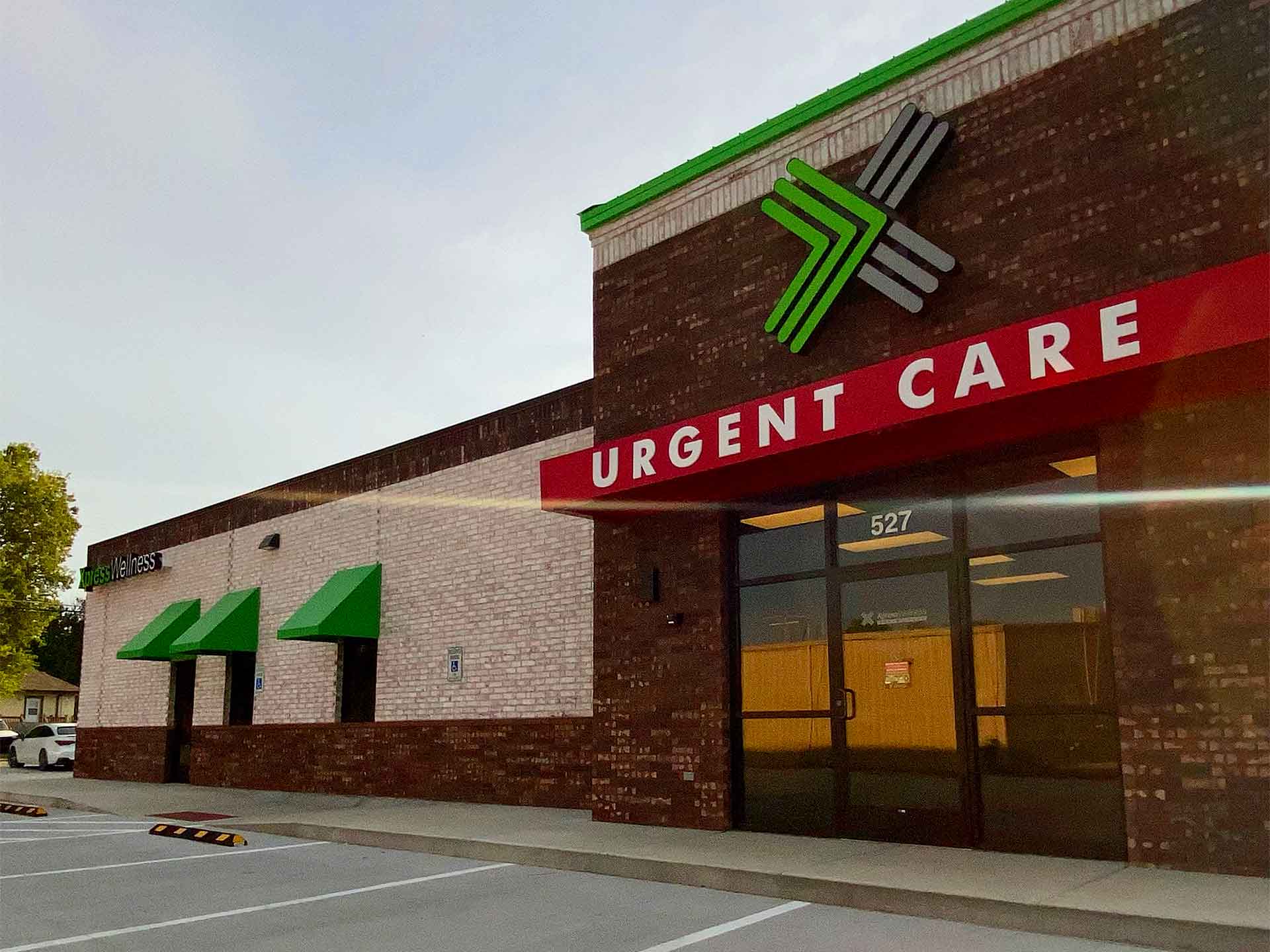Recognizing the Role of Urgent Treatment in Giving Timely Therapy for Non-Life-Threatening Problems
Immediate care facilities have actually arised as an essential part of the medical care landscape, dealing with the immediate needs of people with non-life-threatening problems. By using available and prompt clinical solutions, these facilities properly bridge the gap between main care and emergency situation departments. The implications of their role extend past simple convenience, motivating a better evaluation of when and how these facilities are utilized. Recognizing the nuances of immediate treatment might significantly impact individual outcomes and the overall effectiveness of healthcare distribution. What elements add to their expanding value in contemporary medication?
What Is Urgent Treatment?
Urgent care describes a category of medical solutions made to deal with non-life-threatening problems that call for immediate interest. These centers work as an intermediary between medical care physicians and emergency spaces, supplying a convenient choice for individuals that require prompt care without the substantial waiting times typically linked with emergency departments.
Urgent care centers are typically staffed by physician, including doctors, registered nurse specialists, and doctor assistants, who are trained to identify and deal with a broad variety of problems. Usual solutions given by these facilities consist of therapy for small injuries, illnesses, and infections, as well as diagnostic tests such as X-rays and laboratory job.
The access of immediate care is a key consider its allure, as lots of facilities operate past routine office hours, consisting of weekend breaks and nights. When their primary treatment supplier may not be accessible, this prolonged availability permits individuals to receive prompt care. Additionally, immediate care centers often approve walk-in clients, eliminating the demand for visits. Overall, immediate care plays a crucial role in the medical care system, guaranteeing people can access vital clinical services without delay and effectively.

When to look for care at an immediate care facility instead of a key care medical professional or an emergency situation area,Many individuals may locate themselves uncertain about. Urgent care is designed to attend to non-life-threatening conditions that need punctual attention yet are not severe sufficient to necessitate an emergency clinic go to.
Usually, one ought to take into consideration urgent treatment for concerns such as minor fractures, strains, cuts calling for stitches, or infections like urinary system infections. Additionally, cold or influenza signs, breakouts, and sensitive reactions can likewise be appropriately taken care of in this setting.
It is necessary to keep in mind that urgent care is not appropriate for deadly emergency situations, such as chest pain, problem breathing, or serious blood loss, which demand immediate emergency clinic intervention.
People that do not have accessibility to a main care physician or can not secure a timely visit may additionally gain from urgent care services. Ultimately, comprehending when to use immediate treatment can bring about more efficient healthcare delivery, permitting patients to receive the appropriate level of care based on their specific wellness demands.
Advantages of Urgent Treatment Centers
Selecting urgent care centers for non-life-threatening problems offers numerous benefits that boost individual experience and access. One key benefit is the minimized delay times contrasted to standard emergency situation spaces. Urgent care centers usually operate a first-come, first-served basis, allowing people to obtain prompt medical interest without the long hold-ups usually linked with health center setups.
Additionally, urgent treatment centers provide prolonged hours, consisting of weekend breaks and nights, fitting individuals with varying schedules. This versatility guarantees that people can seek care when it is most hassle-free for them, further advertising prompt intervention.

Furthermore, these centers often supply a detailed series of solutions, including analysis examinations and small procedures, all under one roofing. This combination of services not only streamlines the person experience however also cultivates an extra natural approach to handling non-life-threatening wellness problems, ultimately profiting general client end results.
Common Problems Dealt With
At immediate treatment centers, a selection of non-life-threatening conditions can be properly dealt with, supplying people with timely and accessible medical help. These centers are especially adept at dealing with problems that need prompt interest however do not pose an instant danger to life or arm or leg.
Common problems dealt with at urgent care facilities consist of small injuries such as strains, stress, and cracks. Immediate care centers are furnished to carry out essential diagnostic tests, such as X-rays and research laboratory tests, allowing them to supply thorough treatment.
Moreover, immediate treatment suppliers can provide inoculations, assisting to prevent the spread of infectious conditions - Urgent Care. They also use solutions for small procedures, such as suturing injuries or draining abscesses. By supplying these varied services, urgent treatment facilities play an important role in bridging the gap between medical care and emergency solutions, making sure individuals get prompt treatment for a vast array of conditions without the demand for long haul times commonly related to emergency clinic
Just How Urgent Care Sustains Healthcare System
Urgent treatment facilities play an essential function in sustaining the overall health care system by reducing the concern on emergency situation departments and giving timely access to clinical care for non-life-threatening conditions. By taking care of instances such as minor injuries, infections, and health problems, urgent care facilities allow emergency situation divisions to concentrate on even more crucial individuals needing check that instant focus.
Furthermore, immediate treatment facilities boost healthcare availability, offering prolonged hours and an extra convenient option to conventional primary care setups. This accessibility is particularly helpful for patients that might not have a regular medical professional or who call for prompt therapy outside of normal workplace hours. Consequently, urgent care facilities successfully lower wait times and boost client satisfaction.
Additionally, immediate treatment centers add to cost savings for both people and the healthcare system by offering lower-cost solutions compared to emergency divisions. This monetary efficiency is important in a period of climbing health care prices, enabling people to receive needed treatment without sustaining exorbitant expenditures.
Verdict
In final thought, urgent treatment centers play a crucial function in the health care system by supplying punctual therapy for non-life-threatening problems. By linking the space in between key treatment and emergency situation spaces, these centers make sure that patients get timely clinical interest without the prolonged delay times typically related to emergency divisions. The accessibility and performance of immediate care facilities add substantially to relieving the total problem on medical care resources, boosting individual outcomes, and promoting an extra reliable medical care delivery system.
Immediate treatment centers have arised as a crucial part of the medical care landscape, attending to the immediate requirements of individuals with non-life-threatening conditions. Urgent treatment visits generally incur reduced out-of-pocket costs compared to emergency department brows through, making treatment much more economical for patients without endangering top quality. Urgent treatment facilities are equipped to do essential diagnostic examinations, such as X-rays and lab tests, allowing them to offer thorough treatment.
By offering these varied services, urgent treatment centers play an essential function Get the facts in bridging the gap between primary treatment and emergency situation services, ensuring individuals receive timely treatment for a broad variety of conditions without the demand for long wait times commonly linked with emergency situation rooms.
Moreover, immediate care centers improve healthcare access, offering extensive hours and a much more convenient alternative to traditional primary treatment setups.